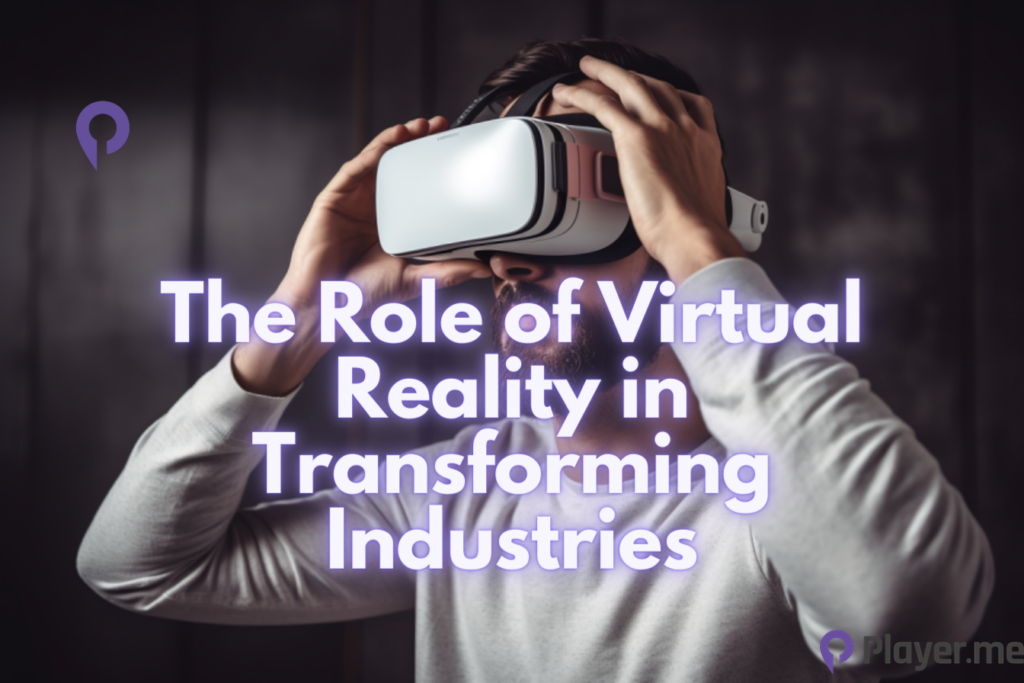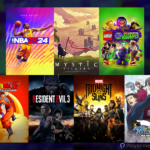Whether it’s entertainment, education, or e-commerce, Virtual Reality (VR) is a growing force behind many evolving industries. However, implementing virtual reality in the workplace transforms and redefines how we do things. VR technology recently hit the mainstream with affordable and accessible business VR headsets. Technology has helped industries like healthcare, retail, and education efficiently deliver services and enhance their virtual reality customer experience.
According to the Association of Training and Development, companies that provide comprehensive employee training have a 24% higher profit margin than those that spend less on training. Businesses practise multiple ways to help employees master their skills – instructor-led training, text manuals, video instructions, coaching, gamification, etc. Meanwhile, technological advancements brought us a revolutionary and extremely effective method.
So how do companies leverage VR for training across different industries? And which benefits can it bring to your business? Let’s figure it out. Also, learn more about AR, VR, and Metaverse.
Also read: Artificial Intelligence and the Future of Humans
Current State of VR in Companies
Virtual reality is an extraordinary technology that transports users into a world where anything is possible. With a simple gesture, you can effortlessly traverse vast distances and conjure objects with a mere thought. The ability to undo mistakes with a single touch adds a layer of convenience to the VR experience.
According to Deloitte’s projections, the VR market is expected to witness a remarkable 50% growth compared to the previous year, resulting in a global revenue of $7 billion. This surge in popularity has sparked excitement among employees, with approximately 60% expressing their eagerness to introduce VR headsets into their workplace.
The landscape of the virtual reality industry is undergoing rapid transformation daily. While some companies are pushing the boundaries by developing immersive full-dive VR experiences, others are still exploring the fundamental aspects of this captivating technology. These 5 futuristic technologies will also play a huge part in shaping our future.
Usage of VR in Different Industries
VR-Based Training in Sports

Practising skills in the real world is essential for sports players. However, it can often be challenging due to the potential for injuries or inadequate training conditions. This is where virtual reality training becomes invaluable. VR enables players to immerse themselves in various in-game scenarios, allowing them to effectively hone their skills without the risk of harm.
Traditional training methods come with a high risk of injury. To address these challenges, N-iX Game and VR Studio created an immersive VR training simulation for Sports Virtual Training Systems (VTS). This innovative solution provides professional quarterbacks with realistic training environments to enhance their skills while minimising the risk of injuries.
Aviation and Virtual Reality

VR programs are an invaluable tool for training pilots and cabin crew members. Flight simulators provide a virtual cockpit where trainees and experienced pilots can practise their skills. This type of training is cost-effective and flexible, as there is no need to locate specific aircraft or construct replicas.
Additionally, VR simulations allow for the safe replication of hazardous conditions and system failures, eliminating any risks to individuals. VR technology streamlines training for ground crew members and flight attendants. American Airlines has implemented a VR training program for its cabin crew. This program equips flight attendants with the necessary skills, such as safety procedures, before they embark on actual flights.
VR in the Retail Sector

Delivering customers exceptional buying and digital experiences is crucial in the retail industry. As the lines between physical and digital commerce become increasingly blurred, VR offers opportunities for companies to bridge this gap. New shopping options that integrate seamlessly with online platforms will be necessary to meet customers’ evolving demands.
For instance, integrating Augmented Reality (AR) and VR into apparel businesses will enable shoppers to view clothing items in 3D and virtually try them on. Additionally, providing customers with the ability to experiment with new hairstyles or tattoos without any long-term commitments will be essential. By embracing VR technology, you can stay ahead of the curve and meet the evolving needs of your target market.
Use of VR in the Health Sector

Ensuring healthcare professionals receive high-quality training is paramount, as their work directly impacts human health and lives. Virtual reality has emerged as a valuable tool in this regard, enabling doctors to practise complex procedures, techniques, and the use of medical equipment. Unlike training with artificial objects with limited usability, VR offers doctors unlimited practice opportunities.
One notable VR technology in this field is MPathic VR, which focuses on training the soft skills of medical professionals. It specifically aims to enhance doctors’ communication with patients, as delivering difficult news can be challenging for both parties. Through this program, doctors learn and practise the art of delivering sensitive information to patients and their families with utmost care and compassion.
Manufacturing and VR

Incorporating augmented reality and virtual reality technologies in the manufacturing sector will bring a transformative shift in the employment landscape. As a technician working in this industry, you can expect to benefit from the emergence of virtual assistance, which remote workers or intelligent devices can provide.
With AR and VR, you can access virtual guidance and support to identify errors, markings, and critical information with enhanced precision. This virtual assistance greatly reduces the reliance on guesswork and manual inspection, leading to increased efficiency and accuracy in your daily tasks.
Usage in Tourism and Travelling

A notable development in AR is the augmented reality update introduced to Google Maps. This update revolutionises navigation by directly overlying directions and information onto the user’s smartphone screen when they scan the streets using their camera. This practical application of AR enhances the user experience and simplifies navigating unfamiliar areas.
Beyond basic navigation, AR-enabled GPS apps have the potential to offer even more valuable features to tourists. For instance, these apps can showcase popular tourist routes, provide translations of street signs in real-time, and offer personalised sightseeing advice based on the user’s location and preferences.
Real Estate and Virtual Reality

The real estate industry stands to benefit greatly from VR. With this technology, real estate agents and property developers can provide potential buyers virtual tours of buildings or properties they sell or lease. This eliminates the need for physical visits, allowing prospective buyers to explore and experience the space remotely.
The real estate industry can leverage AR and VR to provide captivating virtual experiences that streamline the buying or leasing process. Overall, AR and VR are set to transform this industry, enabling professionals to unlock new levels of innovation and efficiency.
Games and Entertainment

When discussing augmented reality , the popular app Pokemon GO often comes to mind as a prime example of its viral success. In the gaming industry, companies can generate revenue by selling virtual reality games through various channels, such as retail stores. Additionally, companies can explore opportunities for advertising partnerships that provide compensation for featuring their products within the games.
Another captivating business prospect lies in AR/VR escape rooms. Rather than developing physical escape rooms with intricate sets and multiple rooms, entrepreneurs can leverage modern technology to create immersive virtual escape room experiences. Without extensive physical modelling, this allows for diverse themes and settings, ranging from space stations to haunted houses.
Frequently Asked Questions
What Are the Benefits of Using Virtual Reality Technology?
VR technology provides an immersive and interactive experience, allowing users to visualise and interact with digital content in real or virtual environments. They have numerous applications across industries, including training, education, entertainment, and simulation, enhancing learning, decision-making, and creativity.
What Are the Potential Limitations of VR Technology?
Some limitations of VR technology include the need for specialised hardware and equipment, which can be costly and require significant processing power. There may also be limitations in the quality of graphics and immersion, especially in lower-end devices.
Are AR and VR Technologies Affordable for Individuals and Businesses?
The affordability of AR and VR technologies depends on various factors, including the type of device, software, and the desired level of functionality and immersion. While high-end VR systems can be more expensive, more affordable options, such as standalone VR headsets and mobile AR applications, are available.





